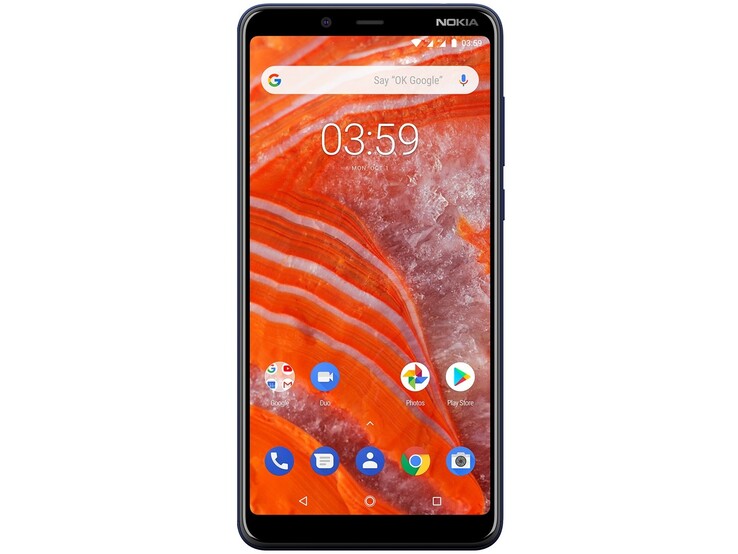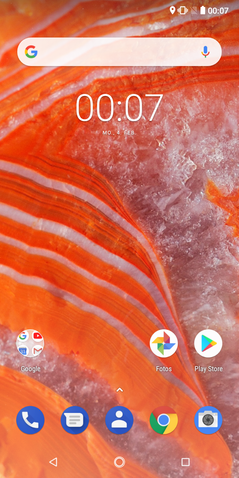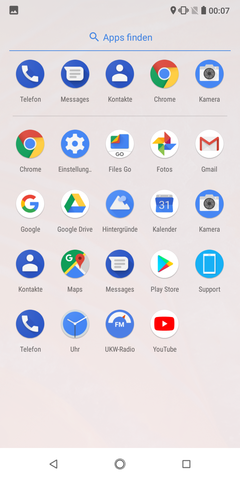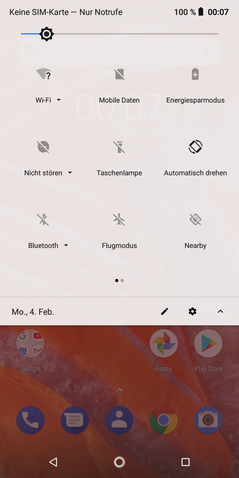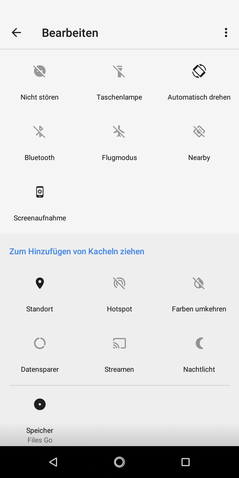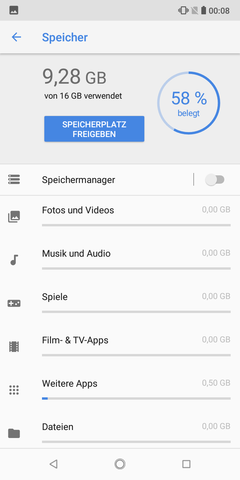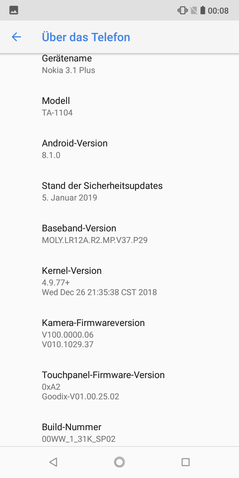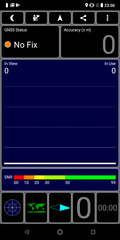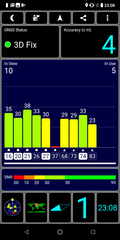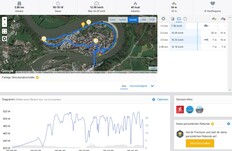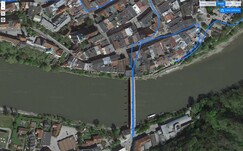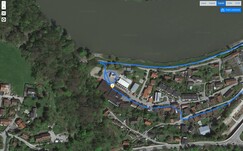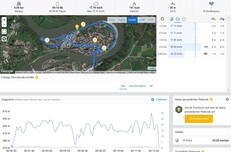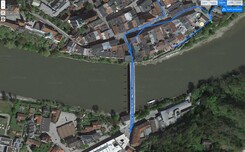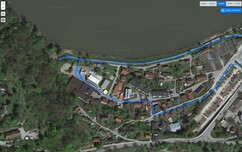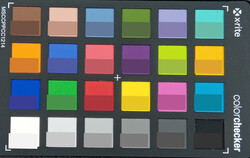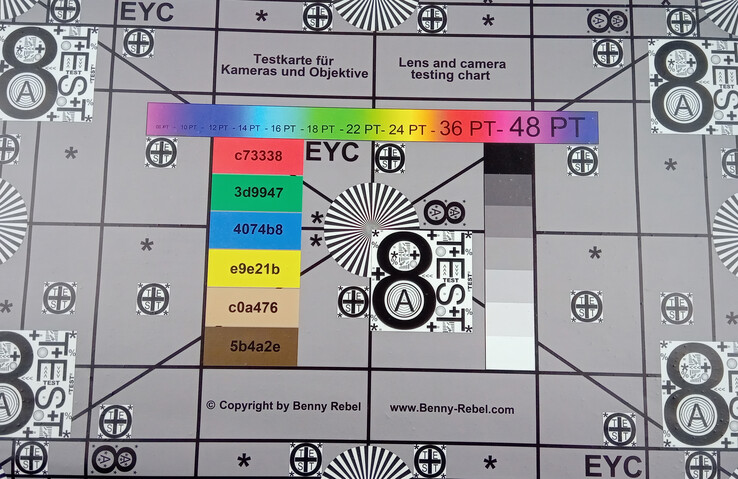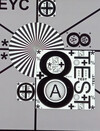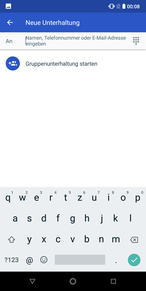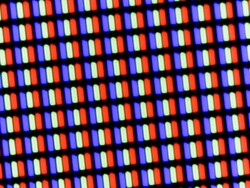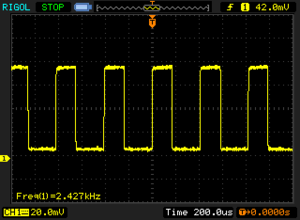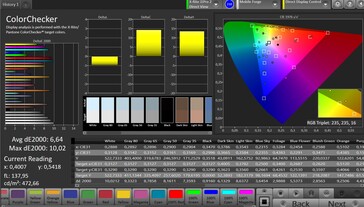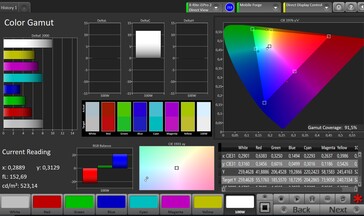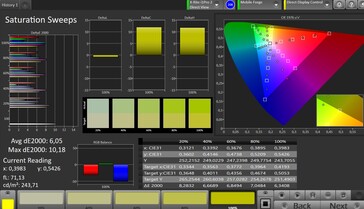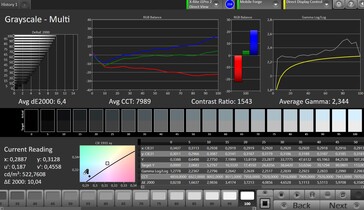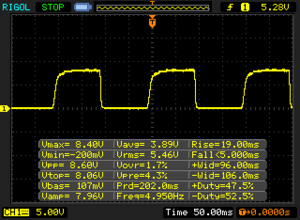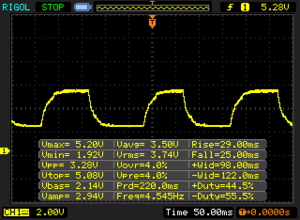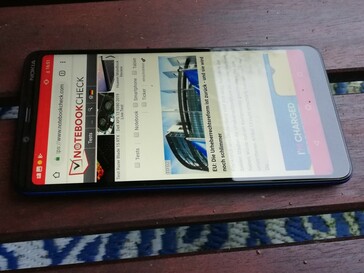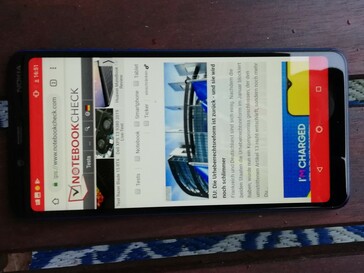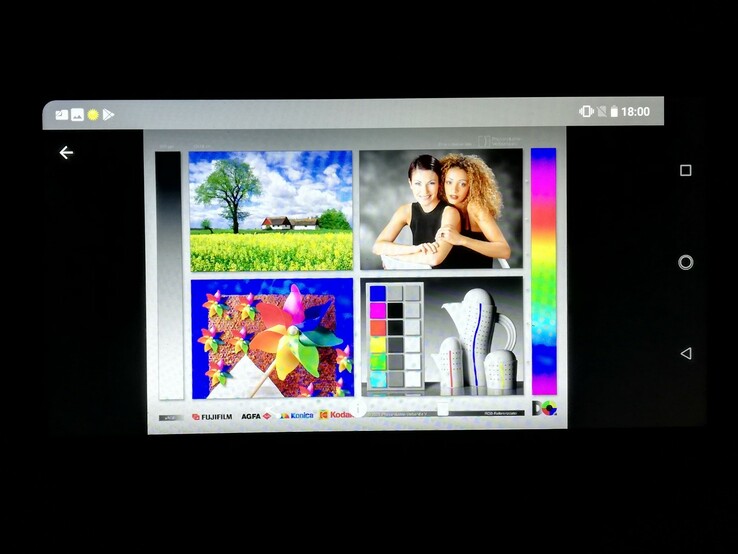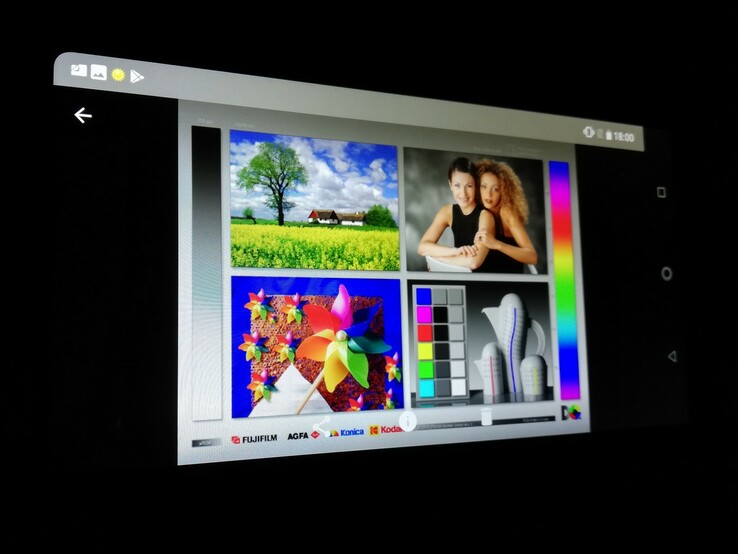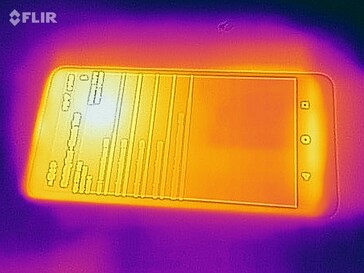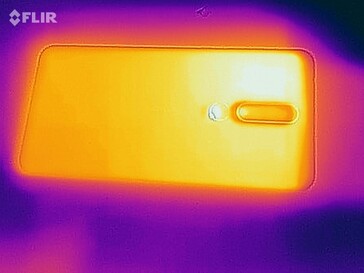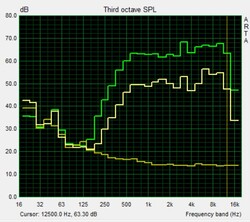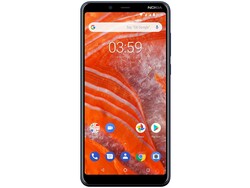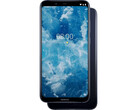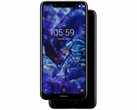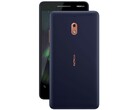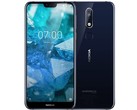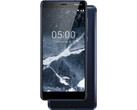Nokia 3.1 Plus Smartphone Review
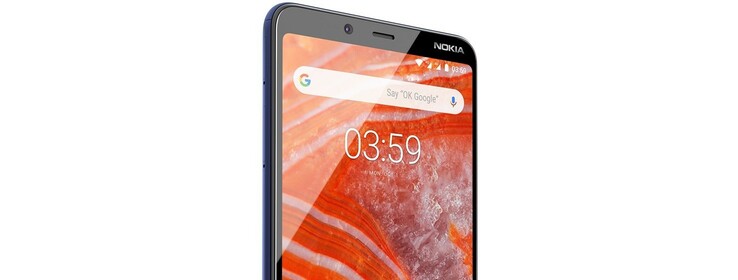
HMD Global has managed to establish Nokia as a brand that offers high-quality smartphones for every budget. Thanks to Android One, users do not need to worry about unwanted bloatware. Our most recent Nokia 2.1, Nokia 5.1 Plus, and Nokia 8.1 reviews found little fault with this concept save for the meager memory configuration.
Today’s review unit can be considered an enhanced version of the Nokia 3.1 entry-level smartphone. Its Mediatek Helio P22 MT6762 SoC and PowerVR GE8320 GPU are slightly faster, however, its RAM and eMMC storage configuration of 2 and 16 GB, respectively, have remained unmodified. The rear-facing camera features a dual-lens setup (13+5 MP), and the device has grown in size due to the larger 6-inch display.
In this review, we are going to compare it not just to the Nokia but also other comparatively priced devices such as the HTC U12 Life, the Huaweis P Smart Plus (2018), and the Samsung Galaxy A7 (2018).
Case
The case is made of sturdy aluminum and clad in a matte blue color. The tight-fitting openings are machined very precisely, and all buttons are located on the right-hand side. The large 6-inch display dominates the well-nigh bezel-less front. Unlike other smartphones the Nokia 3.1 Plus does not feature a notch to house the front-facing camera but a narrow band atop the display instead. The fingerprint reader is located at the rear in the top third, and easily reachable for both left- and right-handers. The rear-facing camera and the LED flash sit above the fingerprint reader.
When compared with other 6-inch devices of its class our review unit is about the same size but a bit heavier than most due to its sturdy aluminum case. In fact, at 180 g (~6.3 oz) it turned out to be the heaviest contender in our test group.
Connectivity
Powered by a Mediatek Helio P22 MT6762 SoC and a PowerVR GE8320 the Nokia 3.1 Plus features 2 GB of RAM and 16 GB of internal eMMC storage. This hardware configuration is slightly better than the average entry-level smartphone, and internal storage can further be expanded with microSD cards of up to 400 GB. Thanks to separate slots for the microSD card and the two Nano SIM cards, the phone’s dual SIM capabilities are not hindered by installing a microSD card.
If supported by your carrier and your plan, you should be able to utilize VoWLAN and VoLTE. In addition to NFC and Bluetooth 4.1 the smartphone also features a 3.5-mm headphone jack for wired analog speakers or headsets and a microUSB port at the bottom for charging as well as transferring data from and to the device. Unfortunately, it only supports USB 2.0.
Software
Out of the box, the Nokia 3.1 Plus came with Android Oreo 8.1 with security patches as of January 5, 2019 preinstalled. Due to its Android One certification the device is free of bloatware, and you can choose freely which apps you would like to install on your smartphone. In addition, Nokia promises operating system updates for at least two years and security patches for at least three. Accordingly, the Nokia 3.1 Plus offers a pure and vanilla Android experience with nothing but the standard Google applications preloaded.
Unlimited photo cloud storage is available for all users by default, and the internal storage can be expanded by installing a microSD card. Unfortunately, it cannot be formatted as internal storage and thus not be used to offload installed apps. However, certified apps can offload their user data onto the external storage, and it can for example be used to store a satnav app’s map data.
Communication and GPS
The device supports cellular communication in 2G (GSM), 3G (UMTS), and 4G (LTE Cat. 4) networks offering download and upload data rates of up to 150 and 50 Mbps, respectively. Near-field wireless communication via NFC, Bluetooth 4.1, and Wi-Fi is also supported.
Since it only supports 802.11b/g/n, the 3.1 Plus yielded below average data rates of 56 Mbps (receive) and 48 Mbps (transmit) in our Wi-Fi test. In addition, transfer rates plummeted regularly while performing our tests, which was most likely caused by the Wi-Fi modem itself.
| Networking | |
| iperf3 transmit AX12 | |
| Samsung Galaxy A7 2018 | |
| HTC U12 Life | |
| Nokia 3.1 | |
| Huawei P Smart Plus | |
| Nokia 3.1 Plus | |
| iperf3 receive AX12 | |
| HTC U12 Life | |
| Samsung Galaxy A7 2018 | |
| Nokia 3.1 | |
| Huawei P Smart Plus | |
| Nokia 3.1 Plus | |
We use the GPS test app to determine GPS accuracy. According to the specs sheet, the Nokia 3.1 Plus supports GPS, GLONASS, Beidou, and Galileo location services. Despite the fact that it took comparatively long to obtain GPS lock, the outdoor accuracy was very good at just 4 m (~13 ft). Indoors, we were unable to obtain GPS lock at all.
We take every device out on a quick bike tour around the block in order to compare it to a professional Garmin Edge 520 GPS unit. The recorded track was off most often in bends and turns, but very accurate on longer straights in return. In other words: the Nokia 3.1 Plus is only good enough for modest and occasional satellite navigation.
Telephony and Call Quality
Phone calls are made and received via Google’s default telephony app. It offers access to a dial pad, a recent calls list, and your contacts. Call quality was very decent, and both conversational partners were able to hear each other very clearly. The internal microphone’s ambient noise cancelling algorithms and the earphone’s high volume were sufficient enough to have a conversation even in loud environments. The included headset was very loud and optimized for voice output.
Cameras
At the back we find a 13+5 MP dual-camera with f/2.0 and f/2.5 aperture. At the front, an 8 MP shooter with f/2.2 awaits. Selfies taken in normal daylight were comparatively pale and dark, but the motif itself remained well visible with plenty of fine details. Darker areas tended to suffer from loss of detail and fine structures due to the camera’s poor light sensitivity. The settings menu is pretty bare-bones and only offers a beauty mode, a timer, and an on/off switch for the flash. A manual mode allows for individual white balance and brightness adjustment, and the device also supports AutoHDR.
Panorama photos taken with the main camera were underexposed yet rich in detail. Transitions between objects were well-defined and only became blurry when zoomed in almost all the way. Close-ups produced similar results, but were more susceptible to uneven lighting conditions: light areas tended to overexpose while dark objects tended to be too dark. Transitions were just as well-defined and colors were slightly more pronounced. Low-light scenarios were too much to ask for. The light source is clearly visible and blurry details of the objects in the photo can be made out, but the photo turned out too dark overall. The settings menu includes modes for panorama, bokeh, and portraits. A manual mode offers aperture presets for macro, infinite, and automatic as well as adjustments for white color and brightness. The aforementioned AutoHDF feature is also available.
Video quality was comparable to photo quality. Image stabilization makes for steady and smooth videos, and the settings include a time laps and slow-motion mode as well as 480p, HD 720p, and Full HD 1080p presets for video quality and resolution. Neither a high frame rate mode with more than 30 FPS nor a manual mode are supported.
When tested in our lab with the ColorChecker Passport under normalized conditions the Nokia 3.1 Plus captured colors brighter than expected. The reason as to why contrary to these findings, our test photos turned out too dark is quite simple: the camera was unable to cope with the real-world uneven light distribution.
Our test chart photo yielded a similar result. Under normalized and controlled lighting conditions, the colors were too bright yet the photos were rich in details and fine structures. Colors faded noticeably on both sides in the middle.
Accessories and Warranty
Included in the box are a USB charger, a MicroUSB cable, and a stereo headset. Additional accessories made specifically for the Nokia 3.1 Plus were not available at the time of writing.
By default, European customers get two years of warranty while US customers are once again limited to just twelve months. Please see our Guarantees, Return policies and Warranties article for country-specific information.
Input Devices & Handling
Unsurprisingly, the Nokia 3.1 Plus uses Google’s default GBoard keyboard app for text input, which allows for comfortable input of longer texts and supports vibration feedback. The touchscreen was very responsive and fast, and worked very well up to its edges. However, the touchscreen’s surface was uncomfortably grippy and offered too much fingertip resistance. Consequently, we had trouble with drag & drop operations. Rotating the screen via the built-in orientation sensor was slightly laggy but reliable.
Unlocking the phone can be achieved via the rear-mounted fingerprint reader. It worked very well and rarely ever required us to repeat our unlocking attempts.
Display
The 6-inch 18:9 IPS panel offers a native resolution of 1440x720 at an average maximum brightness of 510 nits, which was the second brightest display in our test group. Brightness distribution was determined to be a very good 94%. With sensor support the display can even reach up to 526 nits, and we were able to determine a maximum of 527 nits during the ALP50 test.
We found PMW flickering at brightness levels of 15% and below. At 2,427 Hz the frequency was fairly high, and thus should not cause any problems even for more sensitive users.
| |||||||||||||||||||||||||
Brightness Distribution: 94 %
Center on Battery: 526 cd/m²
Contrast: 3094:1 (Black: 0.17 cd/m²)
ΔE ColorChecker Calman: 6.64 | ∀{0.5-29.43 Ø4.78}
ΔE Greyscale Calman: 6.4 | ∀{0.09-98 Ø5}
91.5% sRGB (Calman 2D)
Gamma: 2.344
CCT: 7989 K
| Nokia 3.1 Plus IPS, 1440x720, 6" | HTC U12 Life IPS, 2160x1080, 6" | Huawei P Smart Plus IPS/LTPS, 2340x1080, 6.3" | Samsung Galaxy A7 2018 Super AMOLED, 2220x1080, 6" | Nokia 3.1 IPS, 1440x720, 5.2" | |
|---|---|---|---|---|---|
| Screen | -46% | -16% | 40% | -13% | |
| Brightness middle (cd/m²) | 526 | 468 -11% | 479 -9% | 570 8% | 506 -4% |
| Brightness (cd/m²) | 510 | 452 -11% | 471 -8% | 565 11% | 490 -4% |
| Brightness Distribution (%) | 94 | 90 -4% | 94 0% | 93 -1% | 93 -1% |
| Black Level * (cd/m²) | 0.17 | 0.62 -265% | 0.27 -59% | 0.24 -41% | |
| Contrast (:1) | 3094 | 755 -76% | 1774 -43% | 2108 -32% | |
| Colorchecker dE 2000 * | 6.64 | 6.09 8% | 6.24 6% | 1.5 77% | 6.4 4% |
| Colorchecker dE 2000 max. * | 10.02 | 10.23 -2% | 10.05 -0% | 3.6 64% | 11.1 -11% |
| Greyscale dE 2000 * | 6.4 | 6.8 -6% | 7.4 -16% | 1.2 81% | 7.5 -17% |
| Gamma | 2.344 94% | 2.708 81% | 2.39 92% | 2.07 106% | 2.2 100% |
| CCT | 7989 81% | 6972 93% | 8942 73% | 6504 100% | 8643 75% |
* ... smaller is better
Screen Flickering / PWM (Pulse-Width Modulation)
| Screen flickering / PWM detected | 2427 Hz | ≤ 15 % brightness setting | |
The display backlight flickers at 2427 Hz (worst case, e.g., utilizing PWM) Flickering detected at a brightness setting of 15 % and below. There should be no flickering or PWM above this brightness setting. The frequency of 2427 Hz is quite high, so most users sensitive to PWM should not notice any flickering. In comparison: 53 % of all tested devices do not use PWM to dim the display. If PWM was detected, an average of 8108 (minimum: 5 - maximum: 343500) Hz was measured. | |||
According to our measurements, the 3.1 Plus’s display offered a great contrast ratio of 3,094:1 and a very low black level of just 0.17 nits. Unsurprisingly, it was outperformed by the only AMOLED display in our test group on the Samsung Galaxy A7 (2018).
Our CalMAN analysis further revealed a very pronounced blue tint and very low levels of red. These color inaccuracies cannot be addressed since the device’s settings menu does not offer any options to do so.
Display Response Times
| ↔ Response Time Black to White | ||
|---|---|---|
| 24 ms ... rise ↗ and fall ↘ combined | ↗ 19 ms rise | |
| ↘ 5 ms fall | ||
| The screen shows good response rates in our tests, but may be too slow for competitive gamers. In comparison, all tested devices range from 0.1 (minimum) to 240 (maximum) ms. » 53 % of all devices are better. This means that the measured response time is worse than the average of all tested devices (20.2 ms). | ||
| ↔ Response Time 50% Grey to 80% Grey | ||
| 54 ms ... rise ↗ and fall ↘ combined | ↗ 29 ms rise | |
| ↘ 25 ms fall | ||
| The screen shows slow response rates in our tests and will be unsatisfactory for gamers. In comparison, all tested devices range from 0.165 (minimum) to 636 (maximum) ms. » 90 % of all devices are better. This means that the measured response time is worse than the average of all tested devices (31.6 ms). | ||
Outdoor usability was decent, and the Nokia 3.1 Plus remained very quite usable in the shade. Thanks to its bright display it remained usable even on bright days. However, due to its highly reflective nature both direct sunlight as well as bright artificial light sources were too much to ask for.
As expected of an IPS panel viewing angles were superb, and the Nokia 3.1 Plus remained quite usable and readable even from acute angles. Neither colors nor contents distorted visibly. Reflections permitting the display can even be used from very odd and unusual positions and angles.
Performance
A Mediatek Helio P22 MT6762 SoC, a PowerVR GE8320, 2 GB of RAM, and 16 GB of storage make for a smooth overall system performance. This hardware configuration is slightly above average for an entry-level device, and it should offer plenty of oomph for everyday apps such as WhatsApp, YouTube, and FaceBook. Even gaming is not completely out of the question as long as one sticks to less demanding titles.
When compared to all MT6762-equipped smartphones the 3.1 Plus’s benchmark results were slightly above average. The 3.1 Plus was also able to outperform its Nokia 3.1 predecessor, and scored a very respectable position in the middle of the pack. GPU-heavy benchmarks told a different story, though, and more often than not the device was barely fast enough for second to last place outperforming only its own predecessor.
| PCMark for Android | |
| Work performance score (sort by value) | |
| Nokia 3.1 Plus | |
| HTC U12 Life | |
| Huawei P Smart Plus | |
| Samsung Galaxy A7 2018 | |
| Nokia 3.1 | |
| Average Mediatek Helio P22 MT6762 (4404 - 7465, n=18) | |
| Work 2.0 performance score (sort by value) | |
| Nokia 3.1 Plus | |
| HTC U12 Life | |
| Huawei P Smart Plus | |
| Samsung Galaxy A7 2018 | |
| Nokia 3.1 | |
| Average Mediatek Helio P22 MT6762 (3805 - 5380, n=21) | |
| GFXBench (DX / GLBenchmark) 2.7 | |
| T-Rex Onscreen (sort by value) | |
| Nokia 3.1 Plus | |
| HTC U12 Life | |
| Huawei P Smart Plus | |
| Nokia 3.1 | |
| Average Mediatek Helio P22 MT6762 (24 - 27, n=9) | |
| Average of class Smartphone (12 - 166, n=157, last 2 years) | |
| 1920x1080 T-Rex Offscreen (sort by value) | |
| Nokia 3.1 Plus | |
| HTC U12 Life | |
| Huawei P Smart Plus | |
| Nokia 3.1 | |
| Average Mediatek Helio P22 MT6762 (17 - 20, n=9) | |
| Average of class Smartphone (22 - 954, n=157, last 2 years) | |
| GFXBench 3.0 | |
| on screen Manhattan Onscreen OGL (sort by value) | |
| Nokia 3.1 Plus | |
| HTC U12 Life | |
| Huawei P Smart Plus | |
| Nokia 3.1 | |
| Average Mediatek Helio P22 MT6762 (15 - 17, n=9) | |
| Average of class Smartphone (18 - 166, n=159, last 2 years) | |
| 1920x1080 1080p Manhattan Offscreen (sort by value) | |
| Nokia 3.1 Plus | |
| HTC U12 Life | |
| Huawei P Smart Plus | |
| Nokia 3.1 | |
| Average Mediatek Helio P22 MT6762 (9.1 - 10, n=9) | |
| Average of class Smartphone (12 - 606, n=158, last 2 years) | |
| GFXBench 3.1 | |
| on screen Manhattan ES 3.1 Onscreen (sort by value) | |
| Nokia 3.1 Plus | |
| HTC U12 Life | |
| Huawei P Smart Plus | |
| Nokia 3.1 | |
| Average Mediatek Helio P22 MT6762 (10 - 11, n=9) | |
| Average of class Smartphone (11 - 166, n=159, last 2 years) | |
| 1920x1080 Manhattan ES 3.1 Offscreen (sort by value) | |
| Nokia 3.1 Plus | |
| HTC U12 Life | |
| Huawei P Smart Plus | |
| Nokia 3.1 | |
| Average Mediatek Helio P22 MT6762 (3.7 - 6.2, n=9) | |
| Average of class Smartphone (8.4 - 413, n=158, last 2 years) | |
| AnTuTu v7 - Total Score (sort by value) | |
| Nokia 3.1 Plus | |
| HTC U12 Life | |
| Huawei P Smart Plus | |
| Samsung Galaxy A7 2018 | |
| Average Mediatek Helio P22 MT6762 (71347 - 88242, n=9) | |
| AnTuTu v6 - Total Score (sort by value) | |
| Nokia 3.1 Plus | |
| HTC U12 Life | |
| Huawei P Smart Plus | |
| Samsung Galaxy A7 2018 | |
| Nokia 3.1 | |
| Average Mediatek Helio P22 MT6762 (52433 - 57309, n=7) | |
The same must be said about the browser benchmarks: the 3.1 Plus was barely fast enough to outperform its own Nokia 3.1 predecessor. Every other device in our test group was faster. That said, everyday web browsing performance was adequate and smooth, and even heavy websites and multimedia contents loaded and displayed fairly quickly.
| JetStream 1.1 - Total Score | |
| Huawei P Smart Plus (Chrome 71) | |
| Samsung Galaxy A7 2018 (Chrome 70) | |
| HTC U12 Life (Chrome 70) | |
| Nokia 3.1 Plus (Chrome 71) | |
| Average Mediatek Helio P22 MT6762 (22.7 - 24.6, n=5) | |
| Nokia 3.1 (Chrome 67) | |
| Octane V2 - Total Score | |
| Average of class Smartphone (2228 - 121337, n=201, last 2 years) | |
| Huawei P Smart Plus (Chrome 71) | |
| Samsung Galaxy A7 2018 (Chrome 70) | |
| HTC U12 Life (Chrome 70) | |
| Nokia 3.1 Plus (Chrome 71) | |
| Average Mediatek Helio P22 MT6762 (3312 - 4508, n=9) | |
| Nokia 3.1 (Chrome 67) | |
| Mozilla Kraken 1.1 - Total | |
| Nokia 3.1 (Chrome 67) | |
| Average Mediatek Helio P22 MT6762 (10846 - 12799, n=9) | |
| Nokia 3.1 Plus (Chrome 71) | |
| HTC U12 Life (Chrome 70) | |
| Huawei P Smart Plus (Chrome 71) | |
| Samsung Galaxy A7 2018 (Chrome 70) | |
| Average of class Smartphone (257 - 28190, n=156, last 2 years) | |
* ... smaller is better
The device features 16 GB of internal storage, however a total of 9 GB was already taken up by the operating system, resulting in just 7 GB of user accessible storage space for apps and data. In addition, the 3.1 Plus’s internal storage turned out to be the slowest of all devices in our test group, which resulted in a short yet noticeable lag when loading photos of files.
The internal microSD card reader supports microSD cards of up to 400 GB. Unfortunately, they cannot be formatted as internal storage and thus not be used for storing apps. However, certified apps can use the expansion to store their data, such as a satnav applications’s map data. When benchmarked with our Toshiba Exceria Pro M501 reference card, the card reader performed as expected and was comparable to other devices in its class.
| Nokia 3.1 Plus | HTC U12 Life | Huawei P Smart Plus | Samsung Galaxy A7 2018 | Nokia 3.1 | Average 16 GB eMMC Flash | Average of class Smartphone | |
|---|---|---|---|---|---|---|---|
| AndroBench 3-5 | 100% | 224% | 60% | 1% | -23% | 2544% | |
| Sequential Read 256KB (MB/s) | 272.5 | 272.8 0% | 303.2 11% | 295.8 9% | 281.5 3% | 164.5 ? -40% | 2226 ? 717% |
| Sequential Write 256KB (MB/s) | 35.72 | 209.4 486% | 200.5 461% | 104.9 194% | 35.26 -1% | 43 ? 20% | 1848 ? 5074% |
| Random Read 4KB (MB/s) | 52.4 | 56.7 8% | 102.5 96% | 84 60% | 48.62 -7% | 21.7 ? -59% | 295 ? 463% |
| Random Write 4KB (MB/s) | 8.33 | 16.2 94% | 74 788% | 15.45 85% | 9.2 10% | 8.08 ? -3% | 335 ? 3922% |
| Sequential Read 256KB SDCard (MB/s) | 81.3 ? | 82.3 ? 1% | 76.9 ? -5% | 78.2 ? -4% | 77.2 ? -5% | 59.1 ? -27% | |
| Sequential Write 256KB SDCard (MB/s) | 55.2 ? | 60.9 ? 10% | 51.9 ? -6% | 64.4 ? 17% | 59.8 ? 8% | 39.8 ? -28% |
Gaming
Gaming is definitely not the Nokia 3.1 Plus’s strong suit. While older and modest games should run smoothly by and large modern games with demanding graphics will most likely not, at least not on maximum details. The two games tested by us, "Temple Run 2" and "Dead Trigger 2", ran very smoothly. We should also note that many demanding games, such as "Asphalt 9: Legends" or "Arena of Valor" might fail to install at all due to the lack of internal storage space.
The touchscreen worked reliably while gaming. However, as noted before it offered too much resistance and was not as smooth as we would have wished for. Thus, games that require drag & drop operations can be rather cumbersome to play. In return, the orientation sensor worked flawlessly and fast.
Emissions
Temperature
During our tests, we were able to measure surface temperatures of 27 °C (~81 °F) when idle and up to 40 °C (~104 °F) under load. Overall, the Nokia 3.1 Plus felt comparatively warm due to its aluminum case, but it never turned uncomfortable and too hot to be held in hand. We noticed no restrictions of any kind that could be traced back to high temperatures during our everyday use.
(+) The maximum temperature on the upper side is 39.7 °C / 103 F, compared to the average of 35.2 °C / 95 F, ranging from 21.9 to 247 °C for the class Smartphone.
(+) The bottom heats up to a maximum of 38.6 °C / 101 F, compared to the average of 34 °C / 93 F
(+) In idle usage, the average temperature for the upper side is 26 °C / 79 F, compared to the device average of 32.9 °C / 91 F.
Speakers
The single speaker offers a mediocre maximum volume and a fairly balanced soundscape. In quiet environments, we had no trouble with media playback whatsoever. However, you may want to consider using headphones or external speakers for an improved audio experience. The 3.5-mm headphone jack was tight and worked flawlessly without any negative impact on sound quality. The included stereo headset was very obviously made with phone calls in mind. It offers poor music quality and frequently fell out of our ears.
Nokia 3.1 Plus audio analysis
(±) | speaker loudness is average but good (76.6 dB)
Bass 100 - 315 Hz
(-) | nearly no bass - on average 28.8% lower than median
(±) | linearity of bass is average (9.9% delta to prev. frequency)
Mids 400 - 2000 Hz
(+) | balanced mids - only 1.8% away from median
(+) | mids are linear (4.8% delta to prev. frequency)
Highs 2 - 16 kHz
(+) | balanced highs - only 3.8% away from median
(+) | highs are linear (5.1% delta to prev. frequency)
Overall 100 - 16.000 Hz
(±) | linearity of overall sound is average (27.8% difference to median)
Compared to same class
» 72% of all tested devices in this class were better, 5% similar, 23% worse
» The best had a delta of 11%, average was 35%, worst was 134%
Compared to all devices tested
» 84% of all tested devices were better, 3% similar, 13% worse
» The best had a delta of 4%, average was 24%, worst was 134%
Nokia 3.1 audio analysis
(+) | speakers can play relatively loud (85.9 dB)
Bass 100 - 315 Hz
(-) | nearly no bass - on average 36.8% lower than median
(±) | linearity of bass is average (7.8% delta to prev. frequency)
Mids 400 - 2000 Hz
(+) | balanced mids - only 4.8% away from median
(±) | linearity of mids is average (7.2% delta to prev. frequency)
Highs 2 - 16 kHz
(±) | higher highs - on average 5.6% higher than median
(+) | highs are linear (3.7% delta to prev. frequency)
Overall 100 - 16.000 Hz
(±) | linearity of overall sound is average (26% difference to median)
Compared to same class
» 65% of all tested devices in this class were better, 6% similar, 28% worse
» The best had a delta of 11%, average was 35%, worst was 134%
Compared to all devices tested
» 79% of all tested devices were better, 4% similar, 16% worse
» The best had a delta of 4%, average was 24%, worst was 134%
Power Management
Power Consumption
According to our measurements, the Nokia 3.1 Plus had a minimum power consumption of 1 W when idle and a maximum of 5 W under load. It may not be the most efficient device on the planet, but it is not the worst either and landed somewhere in-between.
The included 10-W charger is amply dimensioned and capable of providing more than enough power for the Nokia 3.1 Plus.
| Off / Standby | |
| Idle | |
| Load |
|
Key:
min: | |
| Nokia 3.1 Plus 3500 mAh | HTC U12 Life 3600 mAh | Huawei P Smart Plus 3340 mAh | Samsung Galaxy A7 2018 3300 mAh | Nokia 3.1 2990 mAh | Average Mediatek Helio P22 MT6762 | Average of class Smartphone | |
|---|---|---|---|---|---|---|---|
| Power Consumption | 4% | -24% | 8% | 23% | 29% | -19% | |
| Idle Minimum * (Watt) | 1 | 0.7 30% | 1.3 -30% | 0.71 29% | 0.68 32% | 0.669 ? 33% | 0.848 ? 15% |
| Idle Average * (Watt) | 2.4 | 1.5 37% | 2.5 -4% | 1.36 43% | 1.33 45% | 1.577 ? 34% | 1.434 ? 40% |
| Idle Maximum * (Watt) | 2.9 | 2.5 14% | 3.6 -24% | 1.47 49% | 1.37 53% | 1.851 ? 36% | 1.618 ? 44% |
| Load Average * (Watt) | 3.7 | 4.7 -27% | 5 -35% | 5.13 -39% | 4.02 -9% | 2.91 ? 21% | 7.01 ? -89% |
| Load Maximum * (Watt) | 5.5 | 7.4 -35% | 7 -27% | 7.89 -43% | 5.89 -7% | 4.41 ? 20% | 11.3 ? -105% |
* ... smaller is better
Battery Life
The device performed admirably in our real-world Wi-Fi test, and managed to outperform its entire competition by a long shot. Charging the 3,500 mAh battery from near empty to full using the included 10-W power supply took a bit over three hours.
| Nokia 3.1 Plus 3500 mAh | HTC U12 Life 3600 mAh | Huawei P Smart Plus 3340 mAh | Samsung Galaxy A7 2018 3300 mAh | Nokia 3.1 2990 mAh | |
|---|---|---|---|---|---|
| Battery runtime | |||||
| WiFi v1.3 (h) | 15.3 | 10.1 -34% | 8.5 -44% | 10.1 -34% | 9.4 -39% |
Pros
Cons
Verdict
Overall, the Nokia 3.1 Plus turned out to be an improved version of the Nokia 3.1. The overall experience was smooth, and the device offered enough performance for everyday applications. We were particularly impressed by the dedicated microSD slot that does not have to share its space with the secondary Nano SIM slot and thus does not have any impact on the device’s dual SIM capabilities. The cameras, on the other hand, were fairly unimpressive, to say the least. Wi-Fi performance was also comparatively poor, but in return the device supports NFC for contactless payment technologies such as Google Play.
The Nokia 3.1 Plus is a solid smartphone with too little internal storage.
Its biggest drawbacks when compared to the competition are the meager internal storage and the poor cameras. While the latter remain usable for occasional snapshots the almost tiny internal storage was a challenge over and over again. Just 7 GB of user-accessible space is simply not enough for apps, photos, music, and other data. MicroSD storage expansion is commendable, however as long as it cannot be used as internal storage to outsource large apps and games its usability remains questionable at best.
Nokia 3.1 Plus
- 02/11/2019 v6 (old)
Mike Wobker




